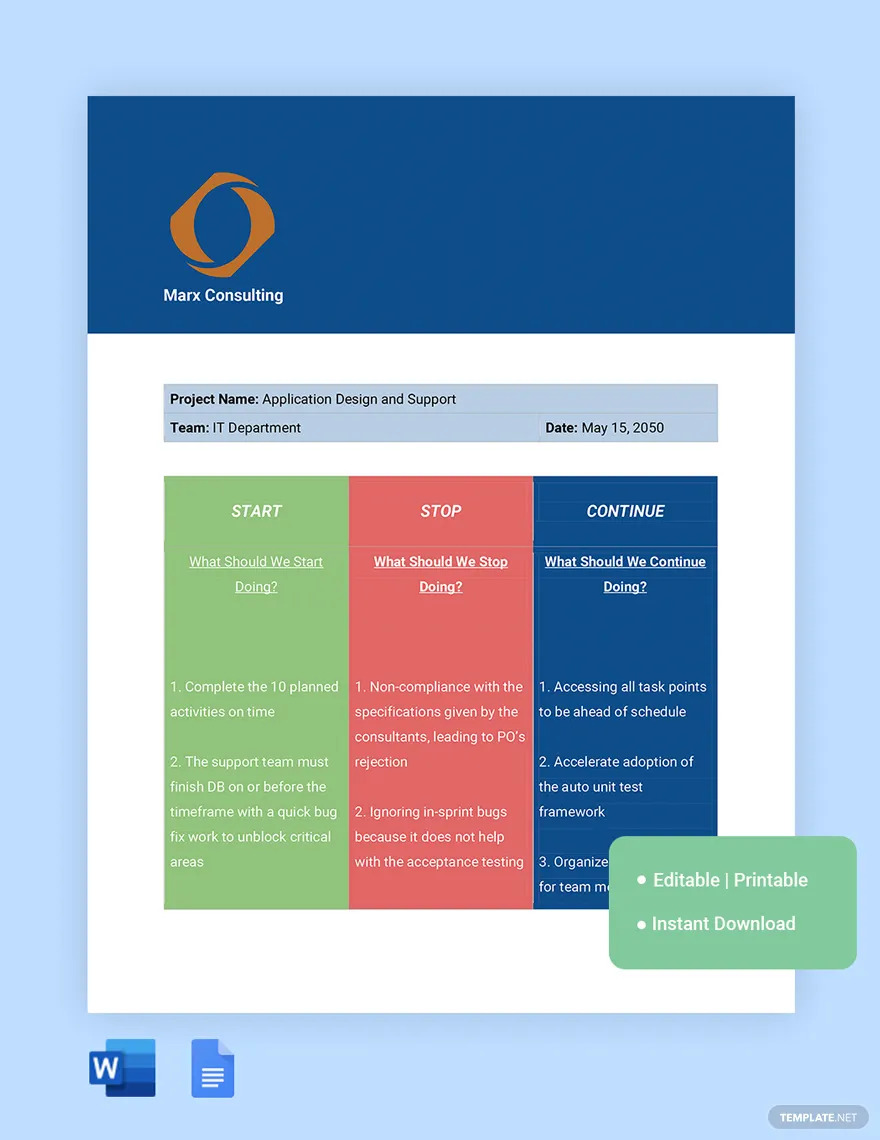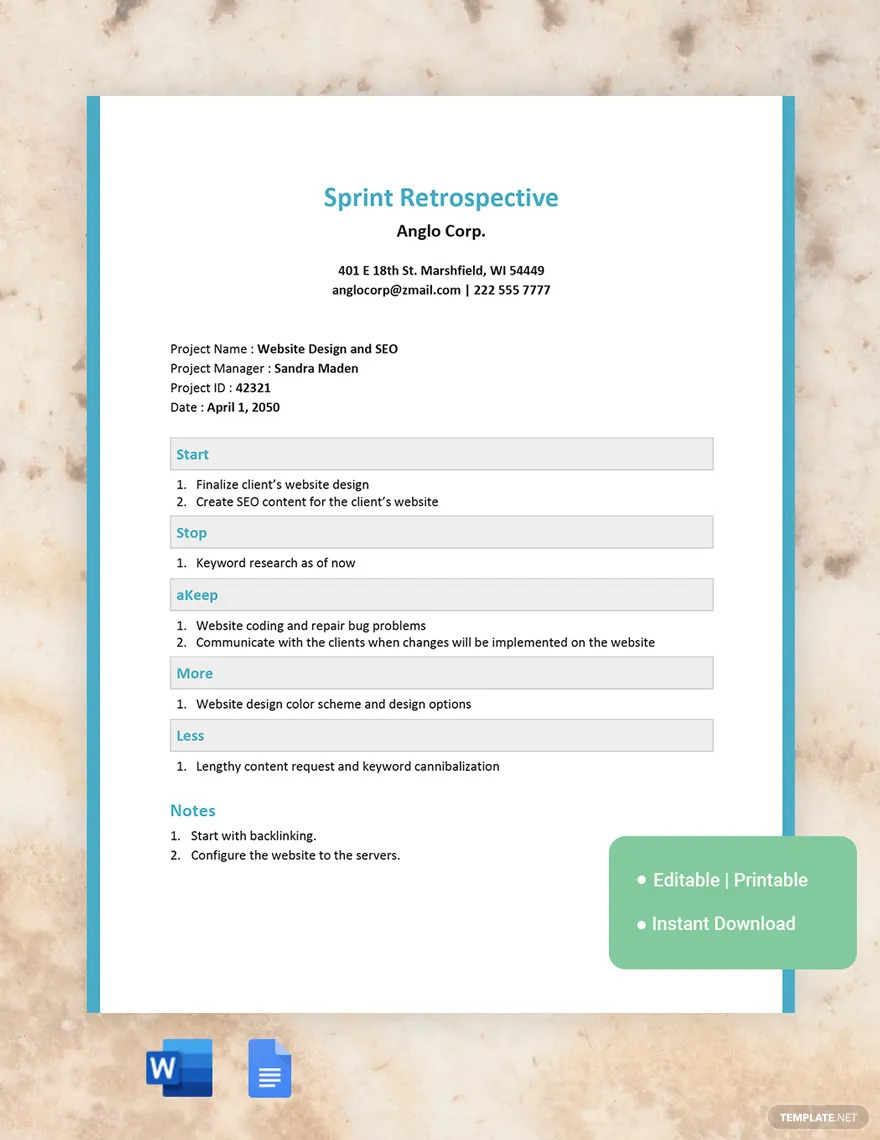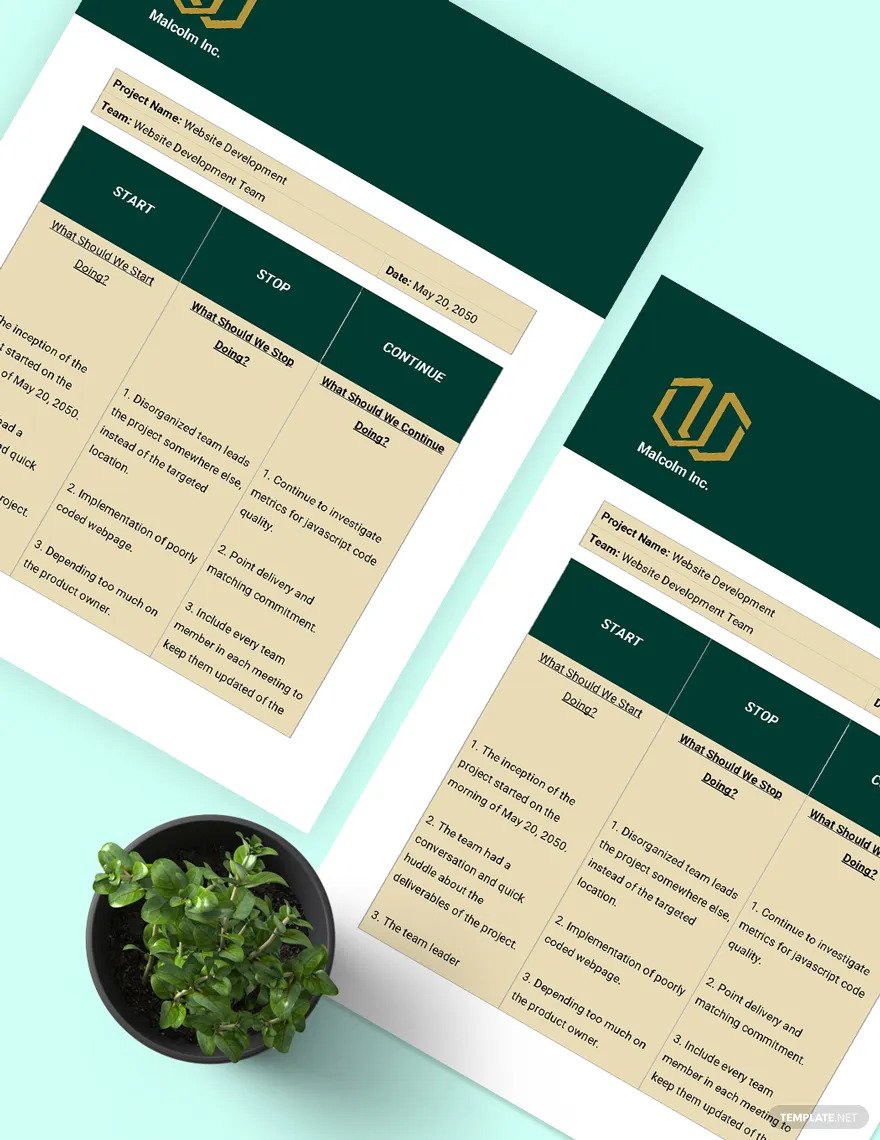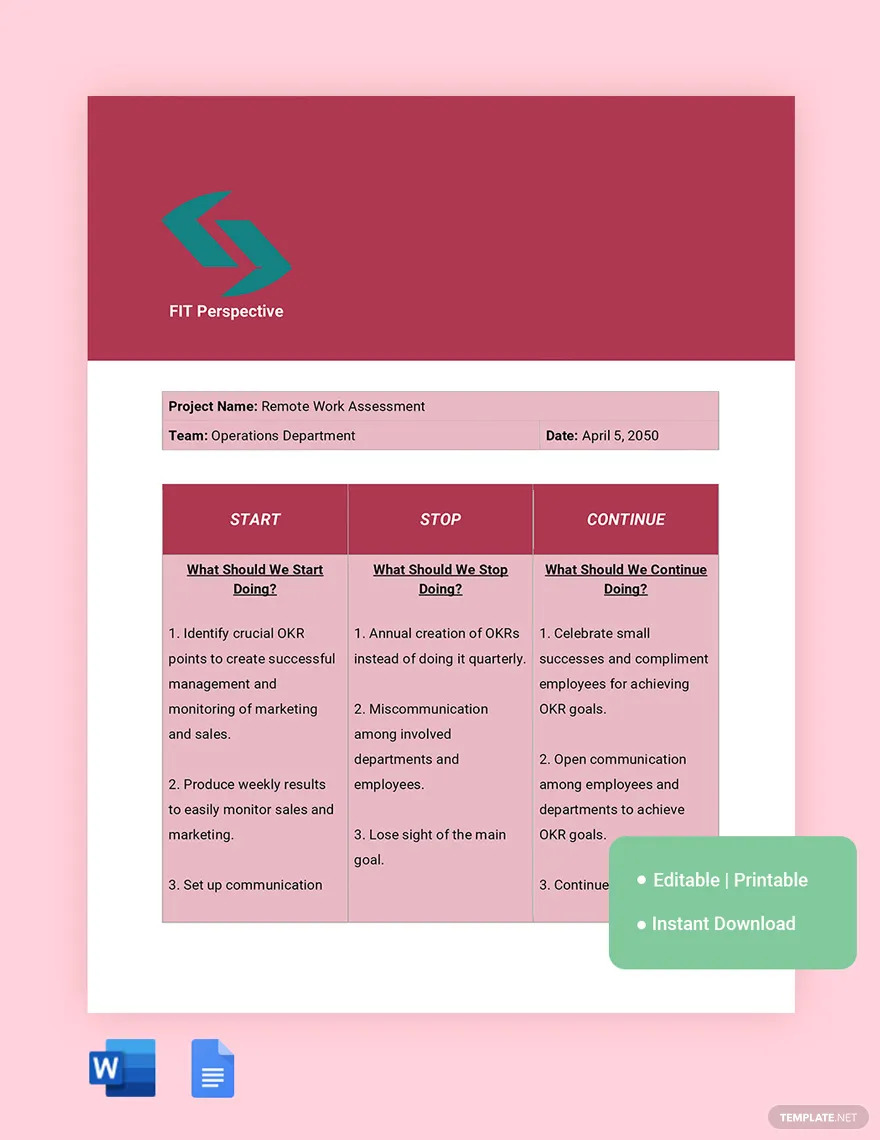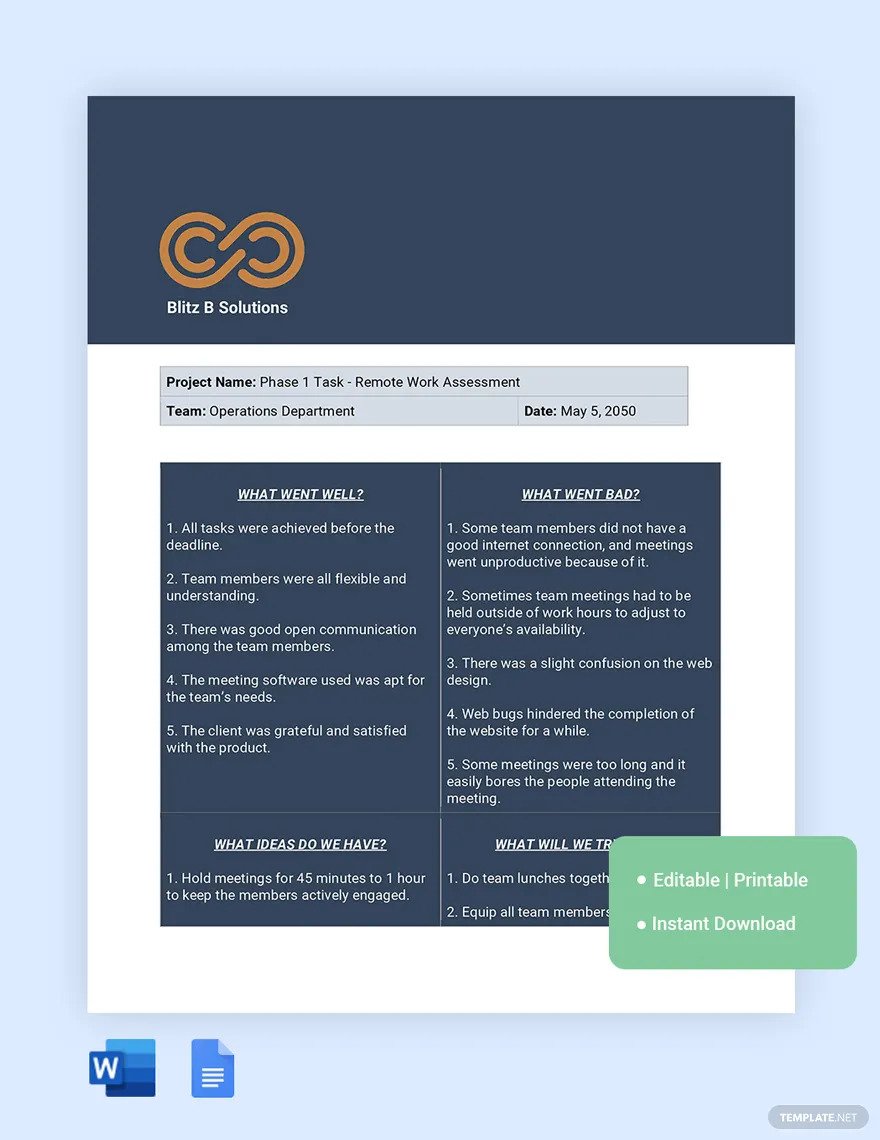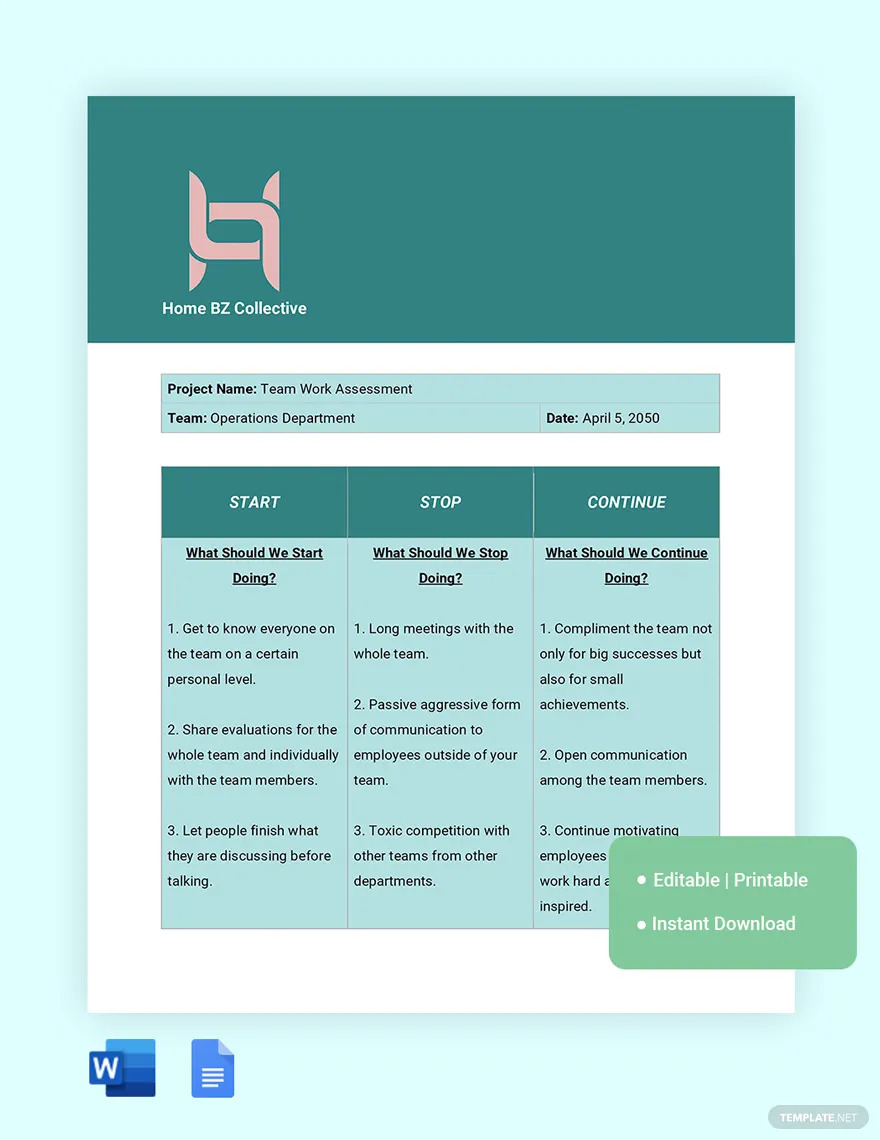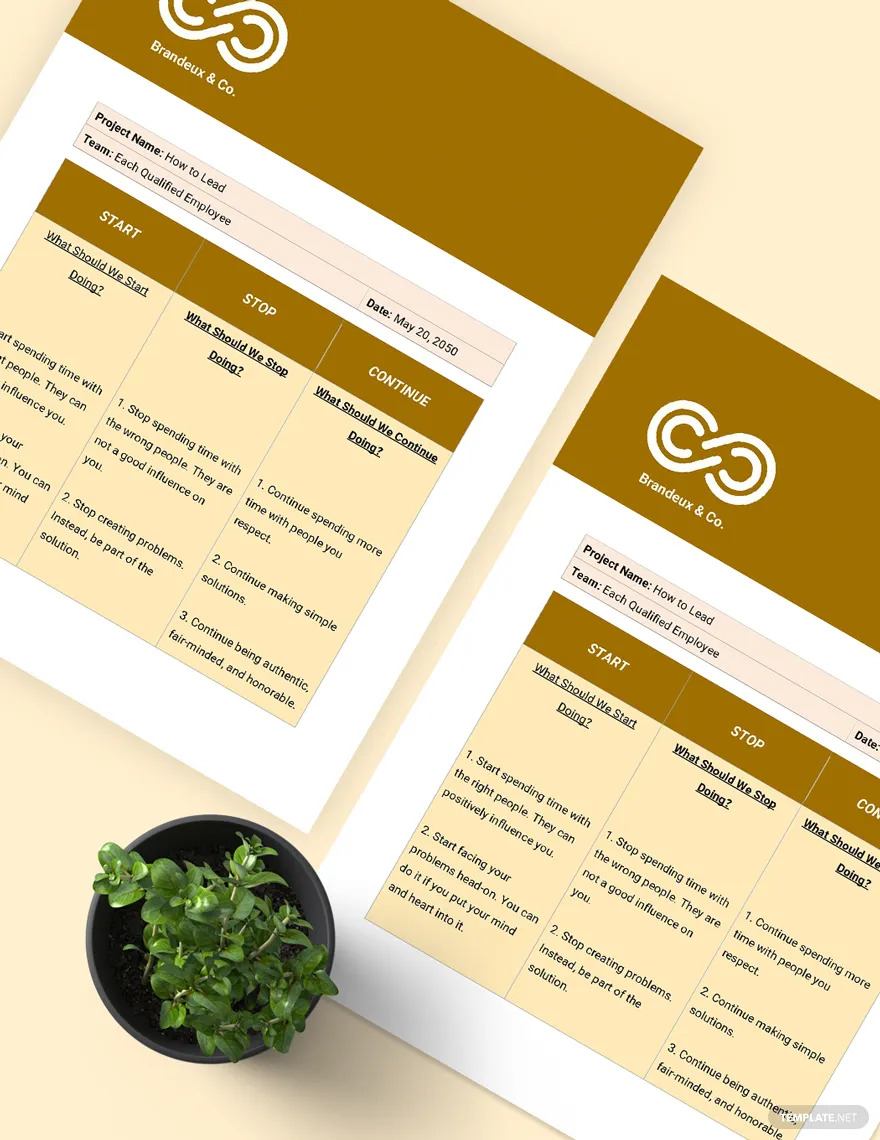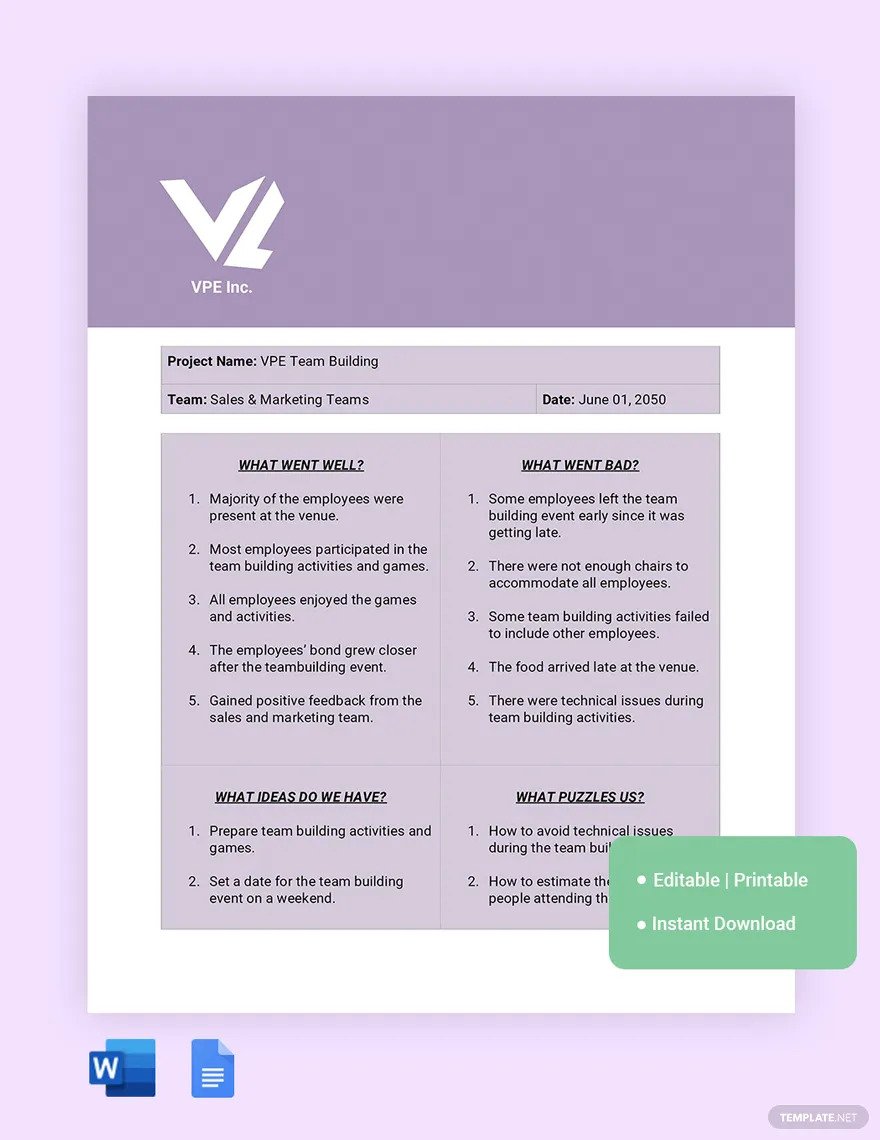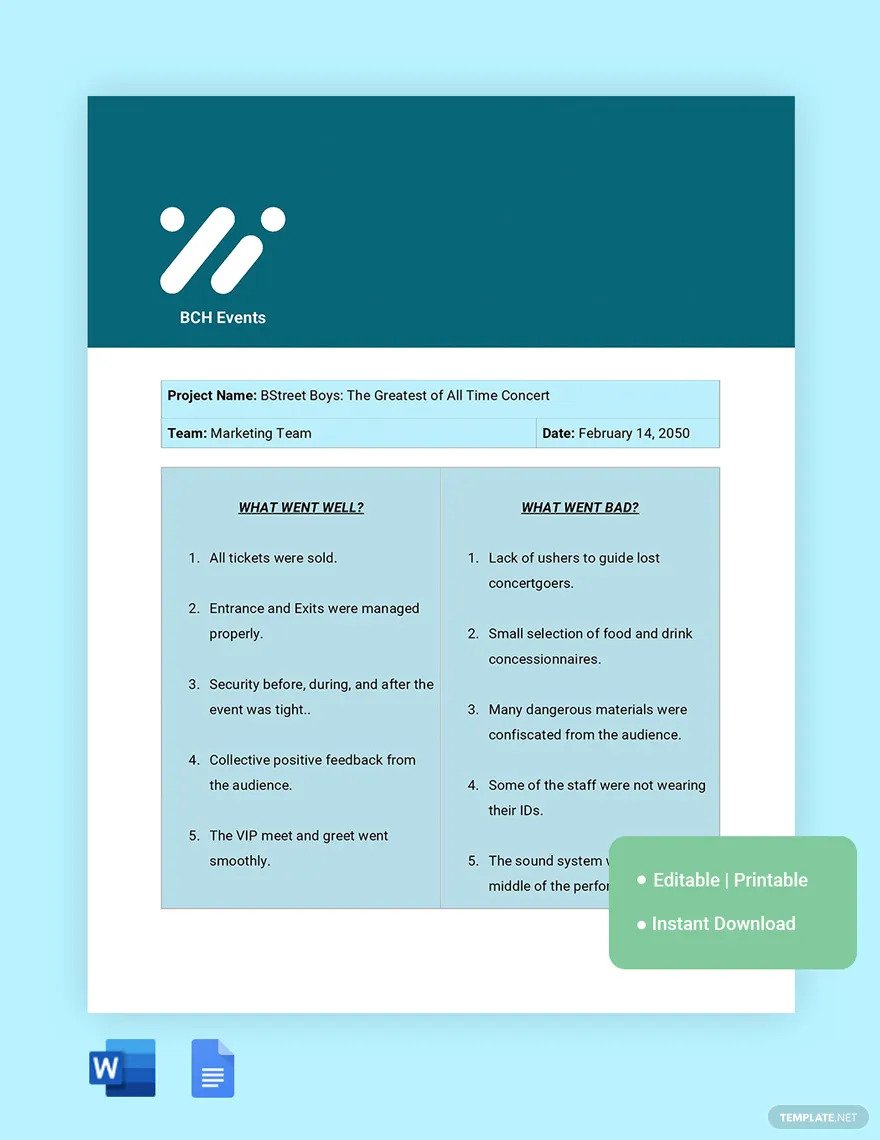Table of Contents
- Retrospective Definition & Meaning
- What Is a Retrospective?
- 10 Types of Retrospective
- Retrospective Uses, Purpose, Importance
- What’s in a Retrospective? Parts?
- How to Design a Retrospective
- Retrospective vs. Prospective
- What’s The Difference Between Retrospective, Cohort Study, and Case-control?
- Retrospective Sizes
- Retrospective Ideas & Examples
- FAQs
Retrospective
Retrospectives are a critical component for a discussion or report after a product or project development. This document is used during a meeting that is held for the purpose of breaking down the results and experienced circumstances to evaluate and assess for improvement.
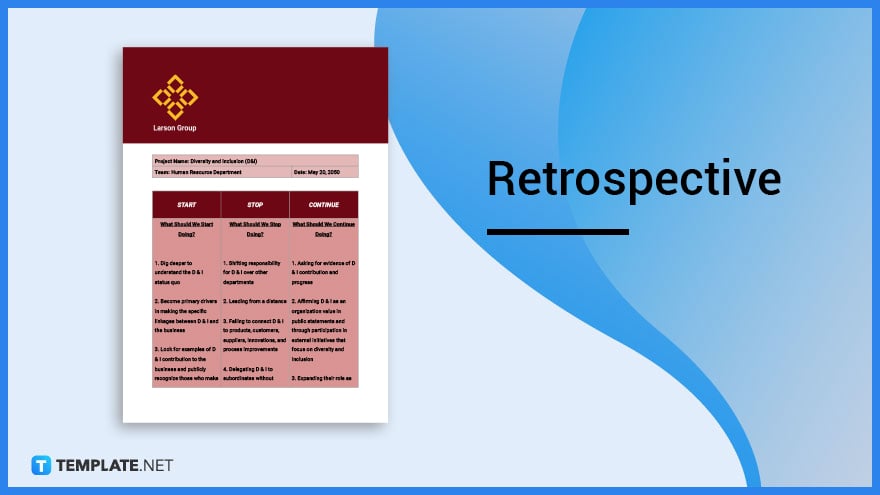
Download the Retrospective Article in PDF
File Format:Retrospective Definition & Meaning
The definition of a retrospective is that it is a document used during a meeting that is held after the release of the product or a project to converse about the results, leading you to determine the weakness and strengths which will give your data that improve the next related procedures.
This means that a retrospective is the evaluation and assessment of newly launched products and projects to look for enhancements and improvements to prevent doing the same mistakes and do reliable and tested activities and programs instead.
What Is a Retrospective?
A retrospective is a type of document used in a movement or endeavor that focuses on assessing past projects and events to identify gaps and inconsistencies. It helps a corporation in identifying ineffective and fragile procedures and eliminating them. This strategy is crucial because it assists a company in significantly improving.
10 Types of Retrospective
Project Retrospective
A project retrospective is a discussion of the team where they gather data regarding the released project. It has the agenda of the results of the project that allows the team to check and evaluate the outcomes. That way, the team will learn and obtain more information, resulting in better project implementations.
Scrum Retrospective
A scrum retrospective is a timed meeting that occurs after the sprint review but before sprint planning. It is a structure allowing agile teams to enhance prioritization, management, and work execution. With this method, improvement is ensured.
Sprint Retrospective
A sprint retrospective is a meeting after a sprint to discuss the lacks and factors that went well during a sprint cycle. This method allows a team to argue and converse about the elements that are relevant and productive. The sprint retrospective is a critical component of the scrum framework for creating, implementing, and managing large-scale projects.
Timeline Retrospective
A timeline retrospective is best for a longer framework instead of a single sprint. It focuses on major events, inflection points, and lessons learned. That way, it gives the assigned team the chance to review feedback and absorb the points given by the board of directors and apply them to the next project.
OKR Retrospective
OKR retrospective or objective and key results retrospectives is the quarterly cycle that allows the team to have enough time to set goals and determine problems. As you know, to ensure a successful project, it is crucial to set goals and target timelines. That way, you can assure rewarding project results.
Remote Retrospective
As we all know, most employees work remotely, especially with the covid 19 still rampant. A remote retrospective allows employees to discuss and evaluate past projects via virtual tools. Video conferencing and chat are instruments of remote collaboration.
Team Retrospective
A team retrospective is a regular activity involving, the gathering of data, discussions regarding past activities and projects, and daily performance. It allows the team to determine their lacks and generate plans that fill the gap. Furthermore, this is a critical time to receive input on what went well and what did not.
Personal Retrospective
A personal retrospective is a reflection time with yourself. It focuses on the past event, allowing you to obtain experiences you can evaluate to see your strengths and weaknesses. With this technique, you can ensure self-development and set self-goals.
Fun Retrospective
A fun retrospective is a one-word game that questions an employee the sum of their feelings about a past iteration in one word. The facilitator takes notes on a flip chart as the team members participate. It raises employee engagement where participation quality is high.
Event Retrospective
An event retrospective is an activity like a hurdle that enables team members to assess the event results and determine the advantages and disadvantages. It assists the assigned team to brainstorm on how to enhance the event for future purposes. As a result, continuous improvement is assured.
Retrospective Uses, Purpose, Importance
A retrospective is a critical component of a company as it aids in enhancing overall performance. It helps companies to identify factors from past events that are irrelevant and a waste of time. With retrospectives, team members can generate effective action plans they will include for the next project.
Improvement
Improvement is the main result of the retrospective. It is an activity involving brainstorming and strategic planning on how to execute company projects more efficiently and effectively. It is a process, that enables employees to be ambitious enough to contribute to company development.
Gather Data
During events and projects, every employee obtains various data which will chip into the development plan. Gathering data is a crucial initiative since it serves as the key to generating new ideas and movements.
Enhance Teamwork
Retrospective involves a team with numerous employees included in a specific project. A company requires high-quality teamwork since a company can excel with the employees combined and synchronized work.
Amplify Forecasting
Due to past events, retrospective activity enables reviews and feedback which are factors for accurate forecasting. Forecasting is important since it helps you predict possibilities and generate contingency plans.
Enrich Communication
Since retrospective involves hurdles and discussions, it enriches communication between employees, allowing them to be approachable to each other and exchange information comfortably. That way, they can improve gathering ideas and planning in sync.
What’s in a Retrospective? Parts?
Title
The topic is indicated by the title. It shows the readers what will be covered, offering them ideas and assisting them in preparing for and becoming orientated to what to expect.
Agenda
As you know, the agenda is a crucial part of meetings. It presents lists of items and activities that will be included in the meeting, allowing you to have a heads up and get ready for your reports.
Goals
A retrospective’s main purpose is to reach your company goals. Of course, the presence of goals is required in retrospective meetings since it is the key element that gives the team direction.
Assigned Team
A project has an assigned team that will with the hardship of the project or event. It is necessary to put the assigned team in the document since they are the ones who will assess and review their performance and brainstorm to have room for improvement.
Visual Structure
A visual structure is essential in meeting documents since it illustrates the flow of the discussion leading to enhance comprehension. Visual presentations deliver impressive contribution since it demonstrates elaborate complex discussions.
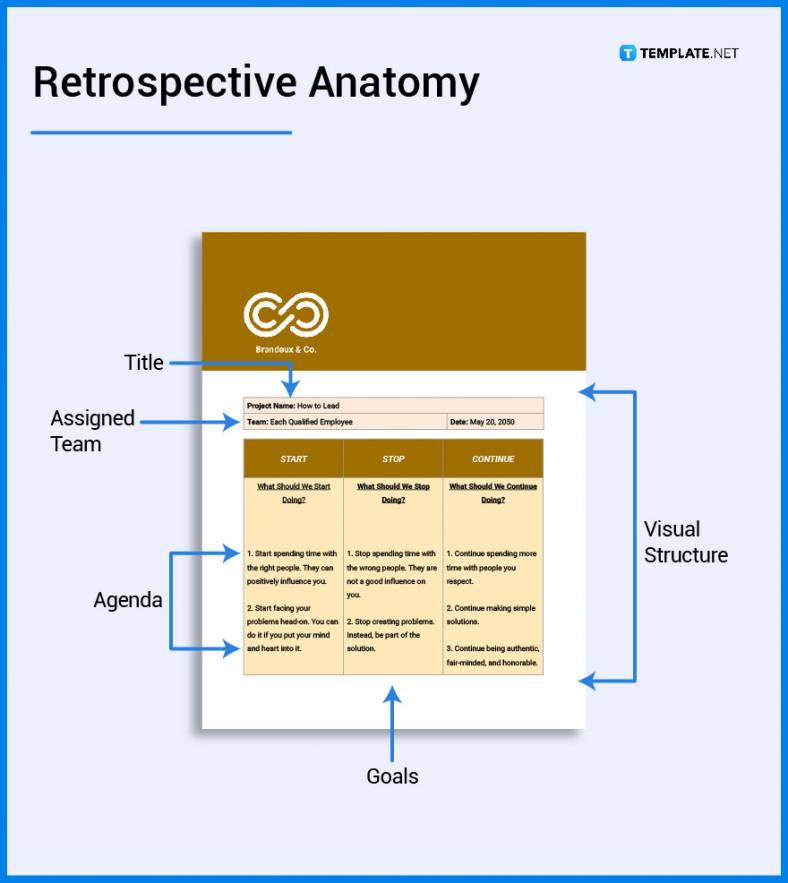
How to Design a Retrospective
1. Select a Retrospective Size.
2. Decide on the goal of your retrospective.
3. Choose Retrospective Template.
4. Pick a format.
5. Design your business case based on your preferences.
6. Create the text for your business proposal.
7. Insert your company’s logo or icon.
8. Incorporate infographics or clipart.
9. Proofread the content.
10. Download and save the file.
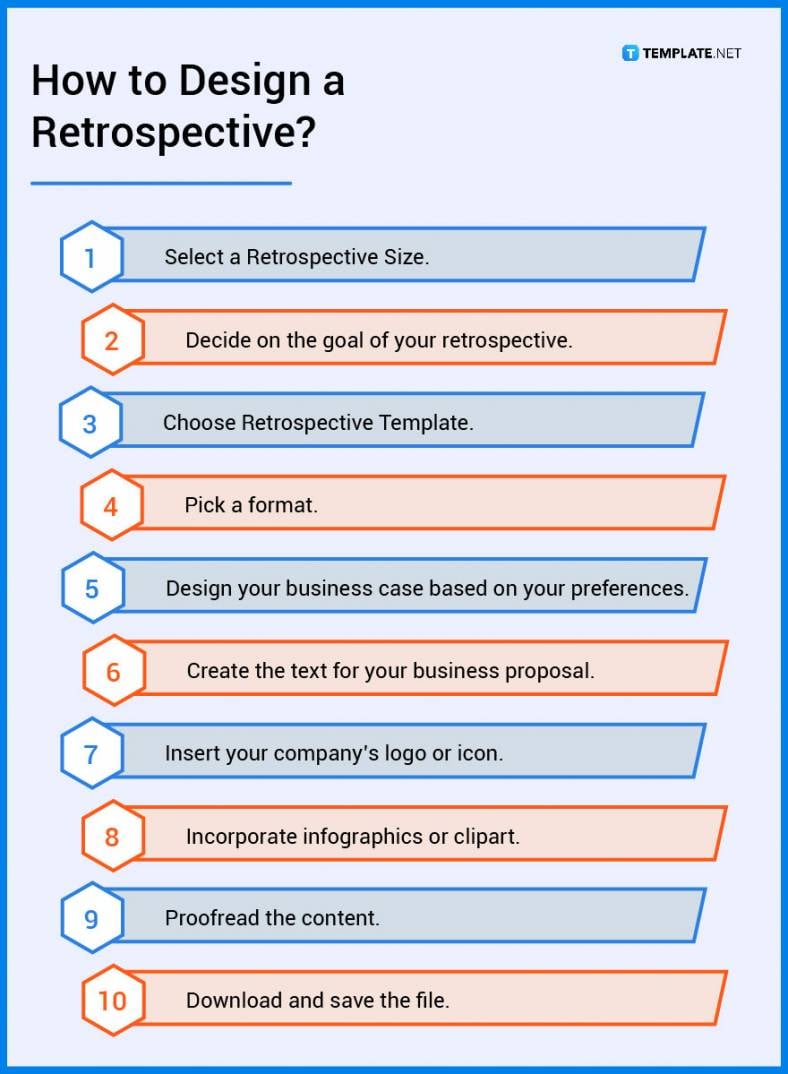
Retrospective vs. Prospective
A retrospective is about evaluating and reviewing the past project, performance, or events to generate a more enhanced execution and activities to overall improve future projects.
A prospective focuses on forecasting the future by keeping track of the productivity and performance of the employees, enabling managers to see possibilities and develop contingency for when this possibility actually happens.
What’s The Difference Between Retrospective, Cohort Study, and Case-control?
A retrospective is an activity in that a team evaluates and examines past performance and movements, allowing them to determine the loopholes and gaps, pushing the team to generate development plans that will eradicate these issues, leading to boosted future operations.
A cohort study is a longitudinal form of research that focuses on groups or individuals that have the same cases or conditions usually taking them many years to gather the information that actually helps.
A case-control study is an analysis of comparing two different groups such as a group with a similar disease and a group without this specific disease.
Retrospective Sizes
Retrospective sizes are crucial to determine and study when choosing the most suitable dimensions for your documents. It has various purposes and roles you would need to know.

Retrospective Ideas & Examples
Every company uses various retrospective ideas and examples that serve as references for their documents. It aids them in improving document quality and appearance, which enhances professionalism.
- IT Retrospective Ideas and Examples
- Agile Retrospective Ideas and Examples
- Meeting Retrospective Ideas and Examples
- Release Retrospective Ideas and Examples
- Incident Retrospective Ideas and Examples
- Product Retrospective Ideas and Examples
- Weekly Retrospective Ideas and Examples
- Program Retrospective Ideas and Examples
- Remote Retrospective Ideas and Examples
- Starfish Retrospective Ideas and Examples
- Sailboat Retrospective Ideas and Examples
FAQs
What is a retrospective in a meeting?
A retrospective in a meeting is the activity of a team looking back to past events and performance to determine weaknesses and generate procedures to improve and enhance overall company performance.
How do you lead a good retrospective?
You can lead a good retrospective if you have all the information needed and the trust of your team in the meeting.
What is a retrospective project?
A retrospective project is a meeting with the goal to assess and analyze finished projects to study the after-effects and develop initiatives that will eradicate circumstances and weaknesses which will lead to impressive enhancement and improvement.
How do you conduct a sprint retrospective?
Allow enough time for the meeting, carefully structure the meeting to ensure the session flows well, deliver an easy-to-understand conversation, vary those operations each retrospective to ensure that these meetings remain fresh, and develop realistic activities and practical insights.
When should you run a retrospective?
It is advisable to execute a retrospective weekly or every after a project to collect data regarding issues and assure to prevent these problems in future projects.
What is a personal growth retrospective?
A personal growth retrospective focuses on the individual rather than a whole team allowing a team member to set their goals and timeline to reach a target.
What do you discuss in a retrospective?
Retrospective meetings include the result of past projects, allowing assigned team members to examine them and track fragilities and generate strengthening procedures that ensure enhancements to future events.
Why retrospectives are important in agile?
Retrospective develops a clear road to ensure a company reaches the goals of agile since it enables a team to reflect on their past events and create enhancements.
Who participates in a retrospective?
Retrospectives are available and compatible with a group of people that finished a recent project to seek improvements.
Why is retrospective important in scrum?
A retrospective is perfect for a scrum that is a framework for a team to work together since it enables members to tackle and discuss their performance and activities, assisting them in tracking weaknesses which the team will find ways to improve the particular weakness.
Why do companies need retrospectives?
Since the market has ever-increasing demands and expectations, it is natural for companies to demand these changes and a retrospective is a significant development methodology that can help them erase irrelevantly and bring new ideas.
Why is improvement so important?
A lot of companies hunger for improvements since it aids them to reach their goals as business hosts that will lead to improved profits and sales.
How do you make retrospectives?
You can make an effective retrospective if you create an environment that boosts psychological functions, figure out the agenda and logistics, complete review data of the past events, discuss with the team, engage in fruitful conversations, and decide on an action plan for the next project.
Why is teamwork needed?
Teamwork allows a company to work smoothly and efficiently since a company is a combination of individuals, and synchronization or high-quality teamwork is required to avoid conflicted, delayed, and unproductive operations.
How does a retrospective affect a company?
Retrospective meetings help employees to determine lacking factors from past projects and activities, leading them to build new ways and methods to reach goals more efficiently, which ensures an impressive contribution to a company.





